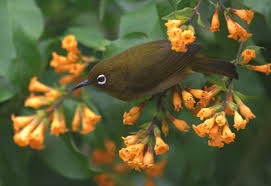|
|
|
| Mixed-species flocks important for biodiversity conservation in tropics |
| Author: |
Christos Mammides |
 |
Text Size: A A A |
|
Landscapes are being increasingly modified by anthropogenic activities. Early reports on mixed-species flocks suggested that flocking species were particularly vulnerable to anthropogenic disturbance. However, how and why the flocking phnenomenon might influence how birds respond to land-use intensity is still unclear. Researchers from Xishuangbanna Tropical Botanical Garden (XTBG), Sri Lanka and India conducted a study in the Sri Lankan and Western Ghats biological diversity hotspot. They aimed to explore the conservation implications of mixed-species bird groups, by examining how mixed-species flocking influenced the response of birds to varying intensities of human land use. They used data from a large-scale study of flocks in Sri Lanka and the Western Ghats of India. The flocks were sampled in three land-use types: inside forest reserves, in buffer areas containing degraded forest or tree plantations, and in agricultural areas.The study found that the flock system may influence species' sensitivities to land use in one of three ways. Flocking species were particularly sensitive to disturbance, being more exclusive to forest, and flocks outside of forests are particularly important to the forest-preferring birds that remain in these areas. Furthermore, different attendant species preferred different leading species and the leading species may themselves vary in their habitat preferences. The effects of leadership could potentially lead to cascading effects on the attendant species’ habitat selection. Finally, forest-interior species, when found outside of forests, had higher propensities to flock relative to other species than when inside forests. Two nuclear species, the orange-billed babbler and the Sri Lanka white-eye, were the most gregarious species in observed flocks. They were most common in the lowlands and montane regions, respectively, and lead the majority of flocks where they were most common. Observed flocks had more individuals of forest-interior species, and fewer open-landscape species, than did simulated null flocks.The researchers thus concluded that mixed-species flocks can serve as targets of conservation policies in tropical countryside landscapes, perhaps not surprisingly given the dominance of flocking as a form of bird behavior in the tropics. The study entitled “Does mixed-species flocking influence how birds respond to a gradient of land-use intensity?” has been published online in Proceedings of the Royal Society B: Biological Sciences.   Orange-billed babbler (L) and Sri Lanka white-eye (R) (Images by Christos Mammides) |
|


